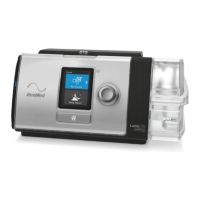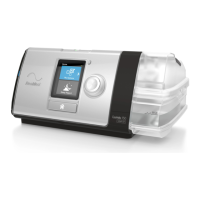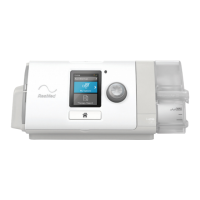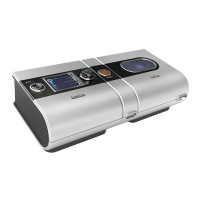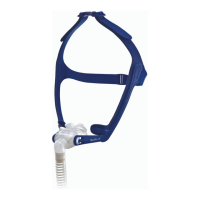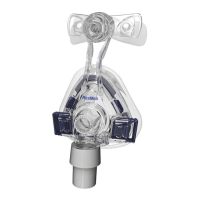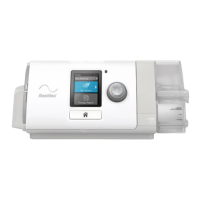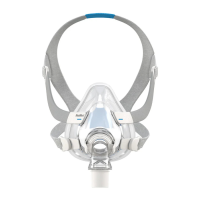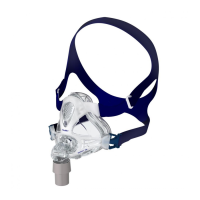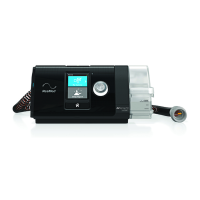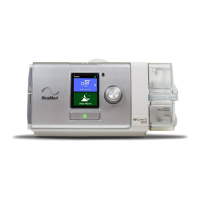12
The following table is a guide to selecting the Ti Max and Ti Min values that best correspond to the
patient’s respiratory rate and inspiration and expiration ratio, depending on the respiratory
conditions.
(BPM)
(sec)
(Reference)
Sufficient inhalation time
I:E = 1:1
exhalation time
10 6 2 1.0 2.0 1.5
15 4 1.3 1.0 2.0 1.3
20 3 1.0 0.8 1.5 1.0
25 2.4 0.8 0.7 1.2 0.8
30 2 0.7 0.6 1.0 0.7
35 1.7 0.6 0.5 0.8 0.7
40 1.5 0.5 0.5 0.7 0.7
Rise time adjustment
S, ST, T, PAC and iVAPS modes
Rise Time sets the time taken for the device to reach IPAP. The greater the rise time value, the
longer it takes for pressure to increase from EPAP to IPAP.
Patients with a high ventilatory demand may prefer a shorter rise time, while patients who are slow
breathers may prefer a longer rise time.
Note: A prolonged rise time inhibits fast pressurisation, therefore, rise time should not be set longer
than Ti Min or the patient's normal inspiratory time.
Leak management with VSync
Using ResMed's VSync algorithm, the Lumis device monitors and compensates for leak by
continuously and automatically adjusting the baseline flow. This enables reliable delivery of therapy
pressure while maintaining patient-device synchrony.
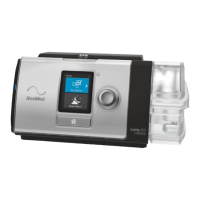
